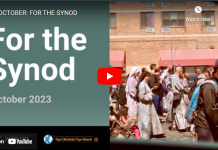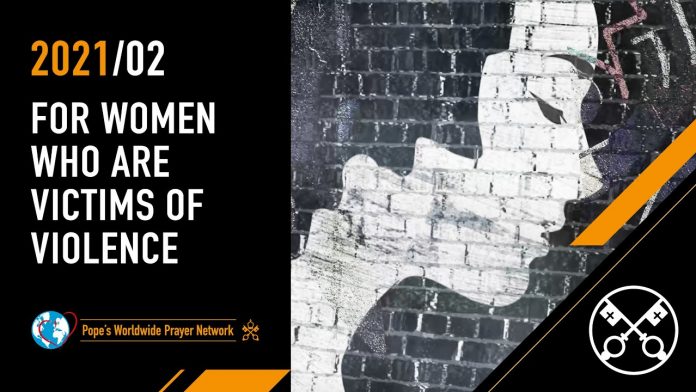VATICAN CITY — The Pope Video for February has been published, with the prayer intention that Francis is entrusting to the entire Catholic Church through the Pope’s Worldwide Prayer Network. It is a powerful message against the violence that millions of women suffer daily: “psychological violence, verbal violence, physical violence, sexual violence.” For Pope Francis, these abuses are “acts of cowardice and a degradation of all humanity.” Consequently, he asks us to pray for the victims, “that they may be protected by society and have their sufferings considered and heeded by all.”
This month’s Pope Video seeks to make the drama of this issue visible also through narration with images. Thanks to the collaboration of Hermes Mangialardo—an Italian creative who has won international prizes and is a professor of animation design—the video represents, through animated illustrations, the story of a woman who is the victim of violence, who finds courage to escape from the tunnel of abuse thanks to her own strength and to the help of the community.
Violence against women, in numbers
“It’s shocking how many women are beaten, insulted, and raped,” says the Holy Father in The Pope Video. Indeed, the statistics compiled by UN Women, updated in November of 2020, are stunning: each day, 137 women are killed by members of their own family; adult women make up nearly half of the victims of human trafficking identified worldwide; and globally, one in three women have experienced physical or sexual violence at some point (and 15 million adolescent girls worldwide aged 15 to 19 have experienced forced sexual relations). What’s more, last year there was the aggravating factor of the pandemic: the restriction of movement, social isolation and economic insecurity made women globally even more vulnerable to violence in private environments.
In his February message, the Pope asks for society to protect these victims. Although at least 155 countries have approved domestic violence laws and 140 have legislation regarding workplace sexual harassment, to give two examples, this does not mean that these laws always conform with international norms and recommendations, nor that they are applied and enforced.









































